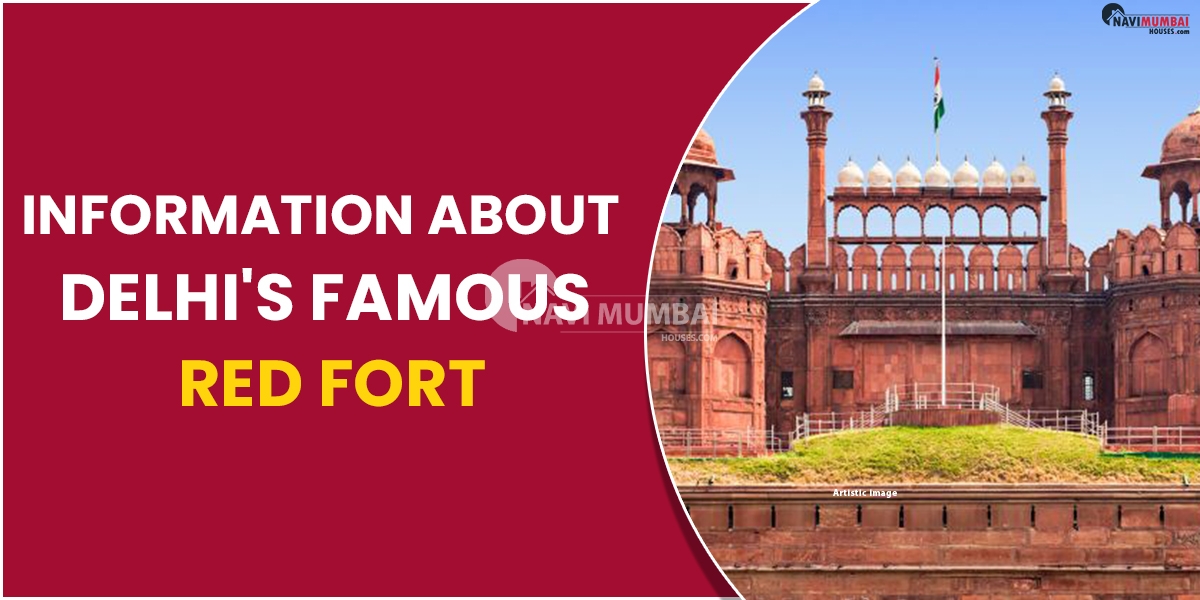
Information about Delhi’s Famous Red Fort
Delhi’s Famous Red Fort: In addition to being an architectural wonder, Delhi’s Red Fort has seen some of the most important moments in Indian history. Other names for the Delhi Red Fort include Quila -e-Mubarak (the blessed fort) and Lal Qalah (also spelled Lal Kila or Lal Qila in Hindi)
Are you looking for flats in kalyan?
History of Red Fort

The Lal Kila was the palace fort of Shahjahanabad, the king’s new capital also known as Old Delhi, and was built by the fifth Mughal emperor Shah Jahan in 1648 as soon as he chose to move his capital from Agra to Delhi. The Red Fort in Agra, which his grandfather Akbar the Great constructed, served as the model for the Red Fort in Delhi. The Delhi Red Fort Complex, which spans 49.1815 hectares (256 acres), also includes the Salimgarh, an older fort that was erect nearby by Islam Shah Suri in 1546. It took over ten years to build this enormous walled construction. The building was start in 1638 by Ustad Hamid and Ustad Ahmad of Shah Jahan’s court, and it was finish in 1648.
The octagonal-shaped Lal Qila served as the administrative centre of the Mughal Empire for around 200 years before the British took control. It was construct on the banks of the Yamuna River, whose waters supply the moats surrounding the fort.
Architecture of Red Fort
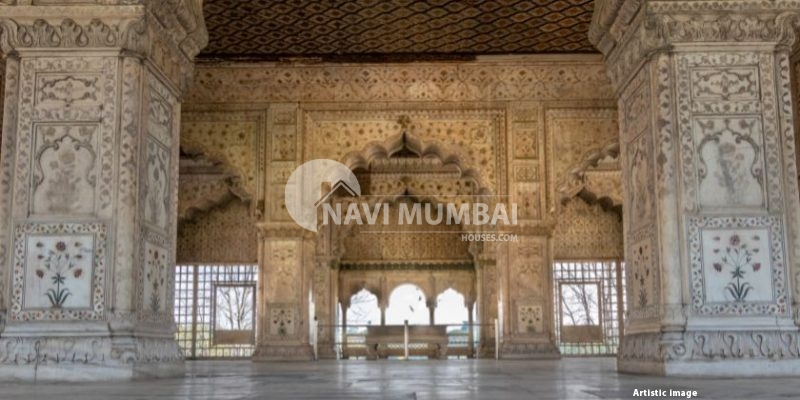
The Red Fort in Delhi is an excellent example of Mughal architectural excellence combine with other regional building styles like Persian, Timurid, and Hindu architecture. The Lal Kila has impact the design of significant structures constructed in Delhi, Rajasthan, and Uttar Pradesh.
There are palaces, private apartments for the royal queens, entertainment halls, royal dining places, projecting balconies, baths, internal canals (including Nahr-i-Bihisht or stream of paradise), gardens, and a mosque within the fort’s grounds, which are enclosed by 75-foot-high red sandstone walls. The Diwan-e-Aam and Diwan-e-Khas, two notable structures within the complex, are typical of Mughal-era design.
The Lahori Gate and the Delhi Gate are the two principal entrances of the structure. The public entrance is located at the southern extremity of the fort, whereas the Lahori Gate is the major entrance.
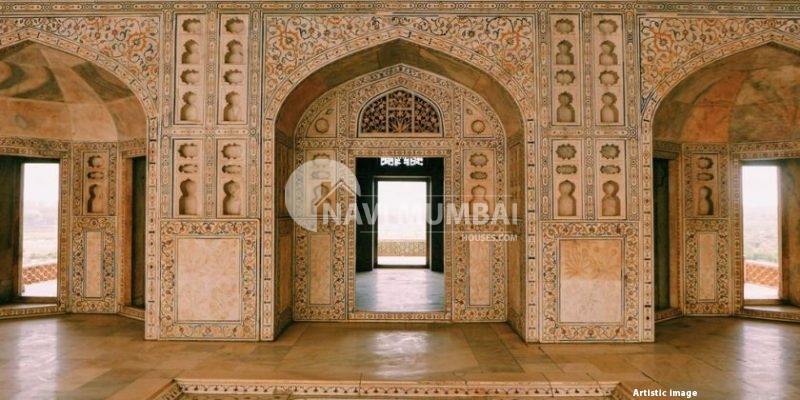
Also read: Shah Jahan Spent on Taj Mahal
Red Fort is a World Heritage Site
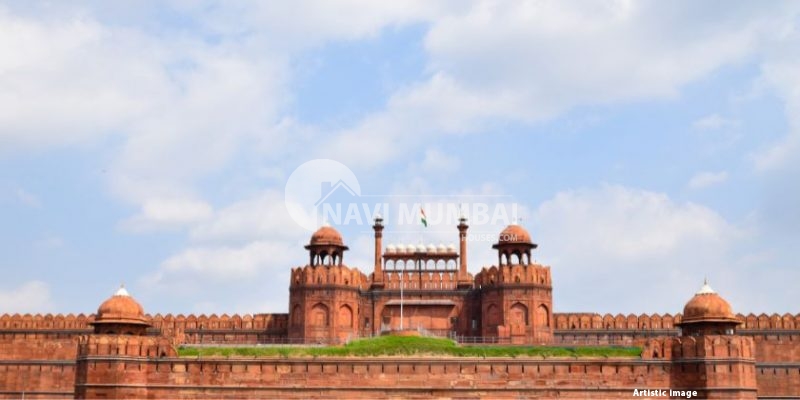
The Lal Qila is overseen by the Archaeological Survey of India and was name a UNESCO World Heritage Site in 2007. It was also designate a monument of national importance under the Ancient Monument and Archaeological Sites and Remains Act, 1959
The Lal Kila presently includes museums where a wide range of historical artefacts are on display. These include the Yaad-e-Jallian, Drishyakala, the Museum of 1857, the Subhash Chandra Bose Museum, and Azadi Ke Deewane.
Important Information about Delhi’s Red Fort
Flag Rising at Red Fort on 15th August
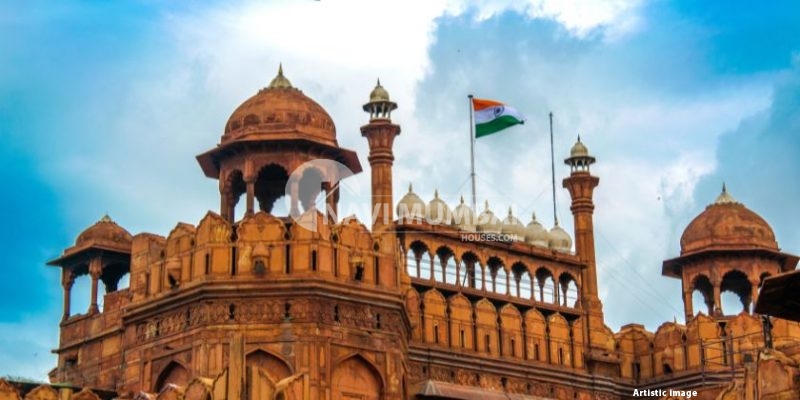
On the nation’s anniversary of independence, the Indian prime minister raises the flag at the Red Fort. Since India won its independence from the British on August 15, 1947, this has been the custom.
Lal Kila’s First Name
The structure was formerly known as Quila-e-Mubarak. The enormous red sandstone walls of the fort were given the title Red Fort by the British, and the natives interpret that as Lal Quila for the same reason.
Original Red Fort Color
The Red Fort was originally construct out of limestone because Delhi lacked an abundant source of red sandstone. The building was eventually painted red by the British because of the damage that had occur over time.
The Final Mughal’s Trial Site Was Red Fort
The final Mughal emperor, Bahadur Shah Zafar, was convict by the British at the Lal Kila on treason-relate allegations and deported to Rangoon, which is now Myanmar.
Light and Sound Show at Red Fort
A 60-minute light and sound performance at the Lal Kila guides guests through the monument’s history. Tickets for the performance can be purchase at the fort’s ticket booths or online. The show airs in Hindi between 7:30 and 8:30 pm and in English between 9:00 and 10:00 pm, though the exact timing may change depending on the season.

The Rs. 500 note features the Red Fort
On the back of the new Rs 500 currency note is a picture of the Lal Kila.
Red Fort Schedule
Visitor duration: 7:00 AM – 5:30 PM
Open days for visitors: Tuesday to Sunday
Weekly vacation: Monday
Duration of a complete tour: 2-3 hours
Entry charge at Red Fort: Children under the age of 15 are not require to pay; Indian citizens, residents of SAARC countries, and citizens of BIMSTEC countries pay Rs. 10, while foreigners pay Rs. 250.
Ideal time to travel: November to February
Metro Stations in the Area: The Violet Line at Lal Quila in Chandni Chowk (Yellow Line)
Tickets for the Red Fort light and sound show: Weekends and public holidays: Rs 80 for adults and Rs 30 for children. Adults pay Rs. 60 on weekdays, and kids pay Rs. 20.
You’re looking for Rental Properties in Kharghar we have the Best Rental Properties in Kharghar like Ready to Move & nearby possession: https://navimumbaihouses.com/property/search/rent/kharghar/
If you want daily property update details please follow us on Facebook Page / YouTube Channel / Twitter









